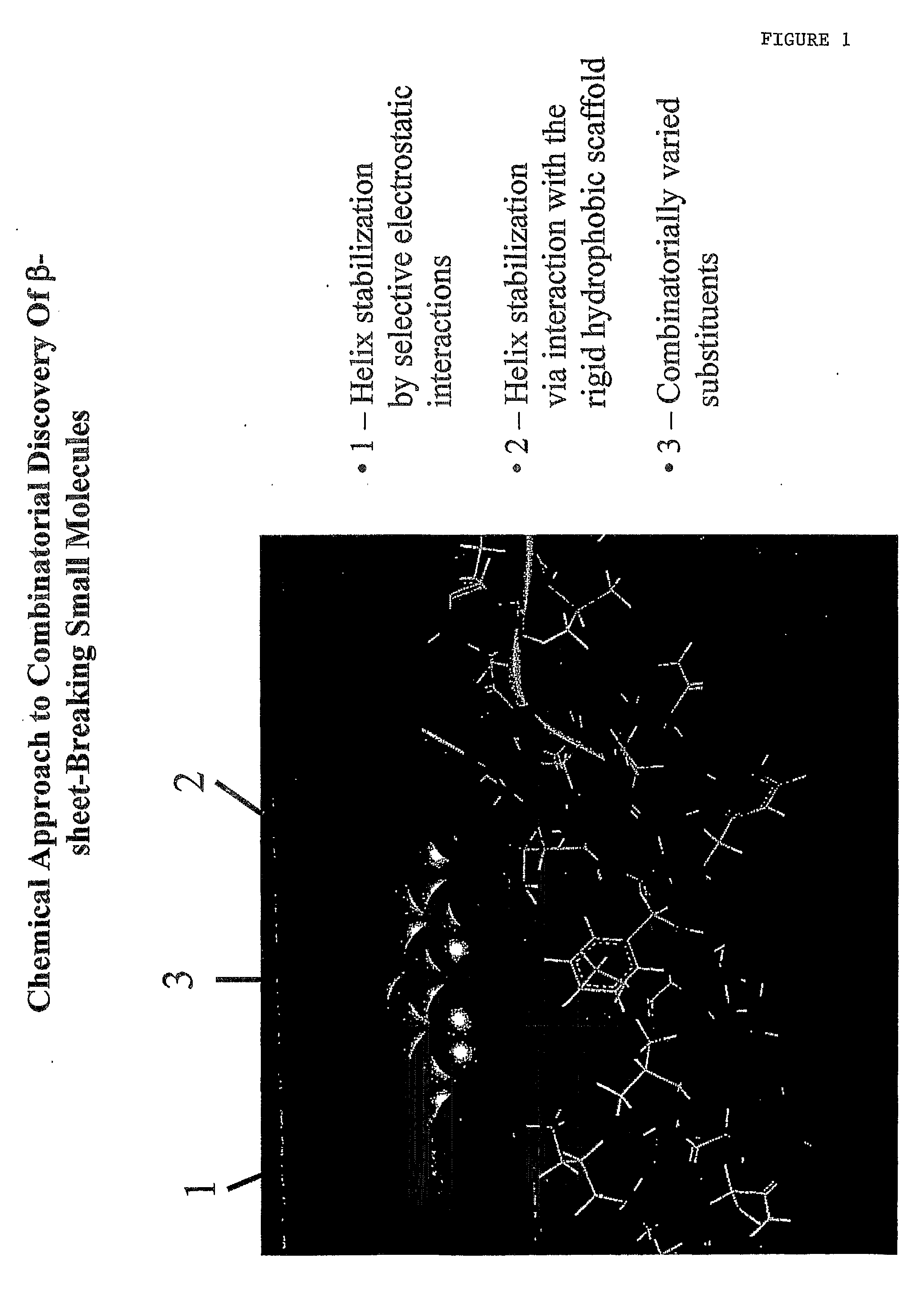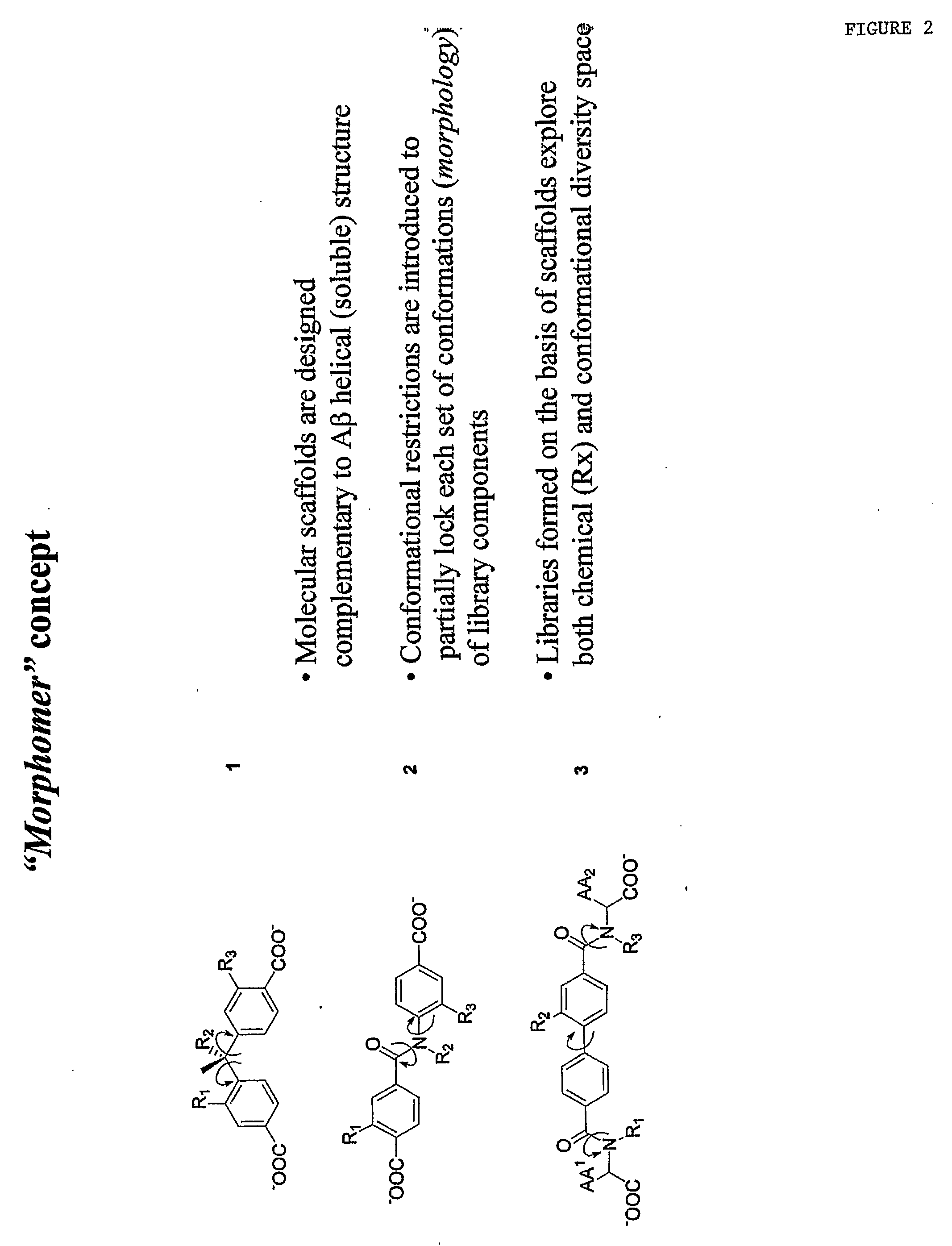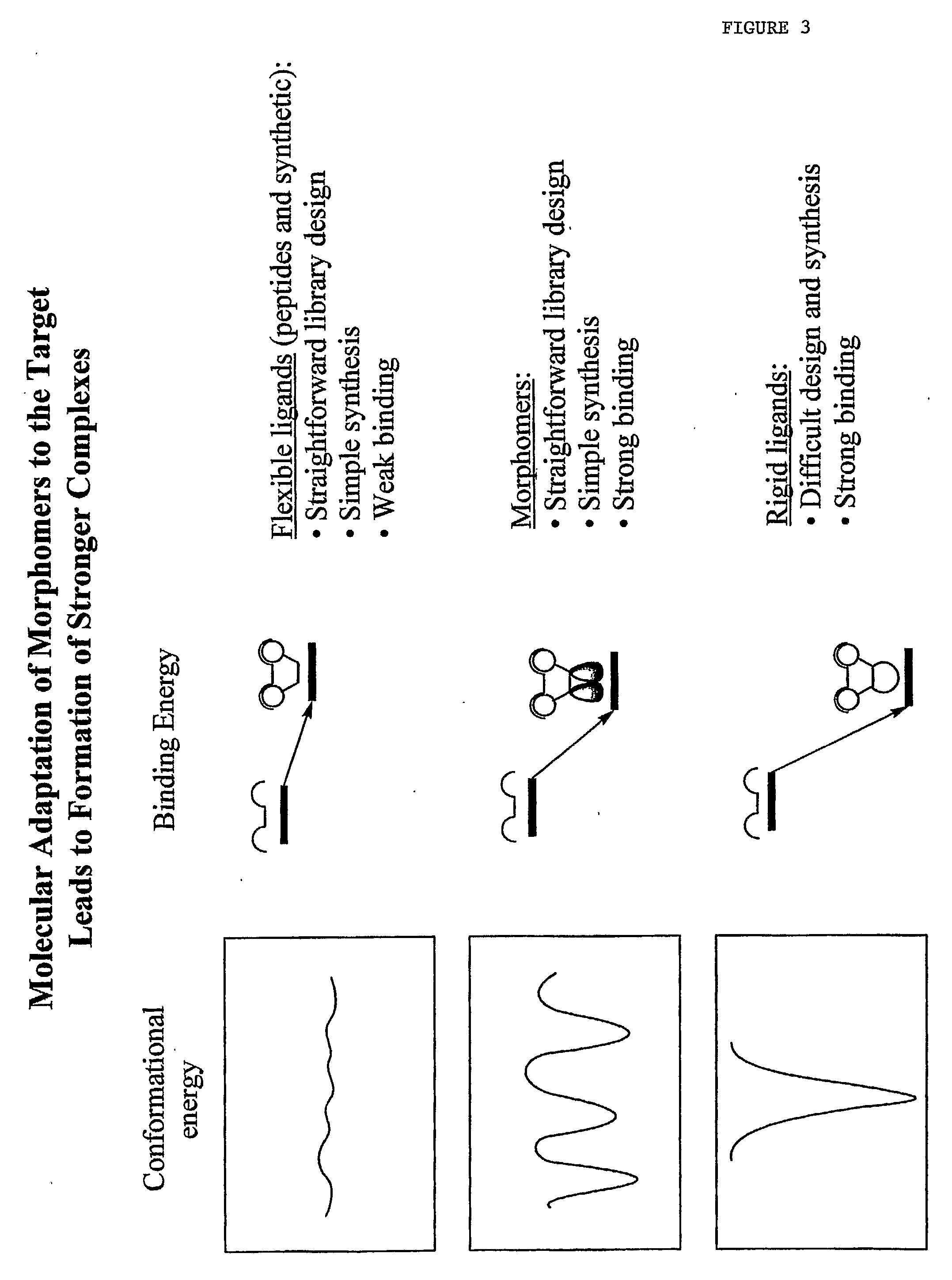Methods And Compositions Comprising Non-Peptide Small Molecules That Solubilize Beta Amyloid Peptide Fiber
a technology of beta amyloid peptide and small molecules, which is applied in the direction of peptide/protein ingredients, instruments, library screening, etc., can solve the problems of increased age, mental faculties still degenerate, and neurodegenerative diseases that have not advanced proportionately, so as to reduce prevent the formation of plaques
- Summary
- Abstract
- Description
- Claims
- Application Information
AI Technical Summary
Benefits of technology
Problems solved by technology
Method used
Image
Examples
example i
Synthesis of Small Molecule Compounds for Screening for Activity on Amyloid Beta Dissolution
[0078] Mesh micro-reactors are loaded with resin for solid phase synthesis of the compound. Synthesis takes place by allowing the reagents to flow through the mesh of the micro-reactor. Virtually any loose resin chemistry can be performed in the micro-reactor. Normal glassware is used for heating, refluxing, cooling etc. of groups of micro-reactors that have been selected by their Rf tags. About 1 ml of reagent per micro-reactor is required for the reaction. When the diversity reaction is complete, the micro-reactors are pooled for a common wash step. The micro-reactors are then sorted using their Rf tags to a reaction vessel for the next step containing the next building block reagent for the second diversity reaction. After all diversity steps are complete, the AccuCleave-96 cleavage station cleaves the compound from the solid support and collect it in a variety of formats for final archiv...
example 2
Screening of Small Molecule Compounds for Activity on Amyloid Beta Dissolution
[0079] To measure β-sheet formation, Thioflavin T (ThT) is added to samples and fluorescent measurements are read as follows. To measure calcium, the ratiometric calcium dye fura-2 is loaded into a mouse neuronal cell line, CATH.a (CRL-11179; American Type Culture Collection) and plated on acid-washed poly-D-lysine-coated glass coverslips. Cytosolic calcium concentrations are measured in Tyrode's solution / 2 mM calcium. Rapidly alternating measurements of fura-2 (excited at 340 and 380 nm) are performed by measuring emission at 516 nm using the special Fura2-Fluo3 filter set 7400 (Chroma Technology, Brattleboro, Vt.), an Axiovert 100 inverted microscope (Zeiss), and a photometry system (DeltaRam model, Photon Technology International, Lawrenceville, N.J.). Each sample is set up in a 1.5-ml Eppendorf tube and incubated in a 37° C. water bath. If stirring of the sample during incubation is required, it is se...
example 3
Administration of Small Molecule Compounds in a Mouse Model to Assess Effects on Disease Progression and Aβ Dissolution
[0081] APP transgenic Tg2576 mice (Taconic Farms, Germantown, N.Y.) at 11 months old are fed the drug-supplemented chow ad libitum for 16 weeks. There are five animals in each treatment group. Animals are housed singly in individual cages, and their body weight and food consumption are monitored weekly. There are no significant differences in the amount of chow consumed or in weight of the mice during the experimental period, either within or between treatment groups. The food consumption of animals in this experiment is 5 gm of rodent chow per day per animal, resulting in a final dose of candidate small molecule compound of 20 mg·kg−1·d−1. The dosage of the candidate small molecule can be titrated at various doses for clearance and toxicity studies.
[0082] Spatial reference learning and memory is tested using the conventional Morris water maze...
PUM
| Property | Measurement | Unit |
|---|---|---|
| time | aaaaa | aaaaa |
| chemical domains | aaaaa | aaaaa |
| binding energy | aaaaa | aaaaa |
Abstract
Description
Claims
Application Information
 Login to View More
Login to View More - R&D
- Intellectual Property
- Life Sciences
- Materials
- Tech Scout
- Unparalleled Data Quality
- Higher Quality Content
- 60% Fewer Hallucinations
Browse by: Latest US Patents, China's latest patents, Technical Efficacy Thesaurus, Application Domain, Technology Topic, Popular Technical Reports.
© 2025 PatSnap. All rights reserved.Legal|Privacy policy|Modern Slavery Act Transparency Statement|Sitemap|About US| Contact US: help@patsnap.com



